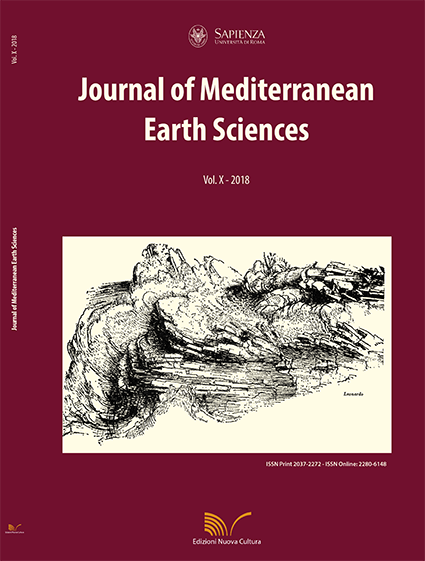Detecting asbestos fibres and cleavage fragments produced after mechanical tests on ophiolite rocks: clues for the asbestos hazard evaluation
DOI:
https://doi.org/10.3304/JMES.2018.016Keywords:
Fibrous particle, rock mechanical test, asbestos hazard, environmental management, ophioliteAbstract
The generation of particulate matter emitted by management of ophiolite rock volumes (e.g., mining, crushing, grinding, and milling) induces environmental impact due to production and dispersion of particles with fibrous habit and silica chemistry, which can be potentially classifiable as asbestos. In this view, linking the properties of the starting rock materials with the characteristics of particles generated after mechanical stress on rocks is preparatory for discussing the environmental impact due to the asbestos hazard. This study deals with the characteristics (in terms of size, morphology and mineral classification) of particles generated after application of three different mechanical stress procedures (i.e. crushing, micronizing, and abrasion) on five ophiolite lithotypes (i.e. rock sequences of mafic and ultramafic composition) and a synthetic material obtained from rock mixing. The combined use of electron transmission microscopy and particle size analyser has been performed on crushed particulate matter for identification of asbestos fibres. The asbestos hazard evaluation has been compared with the routine counting criteria. The results show that all the investigated lithotypes, independently of their petrographic characteristics, resulted able to spread out fibres into the environment after application of mechanical tests. Anyway, the counting criteria adopted for the fibre classification strongly affects the asbestos hazard evaluation. Presently, the procedures for differentiating asbestos fibres and cleavage fragments produced after mechanical tests led to divergent interpretations in assessing the potential environmental impact in natural sites.Downloads
Published
2018-09-05
How to Cite
Belardi, G., Vignaroli, G., Trapasso, F., Pacella, A., & Passeri, D. (2018). Detecting asbestos fibres and cleavage fragments produced after mechanical tests on ophiolite rocks: clues for the asbestos hazard evaluation. Journal of Mediterranean Earth Sciences, 10. https://doi.org/10.3304/JMES.2018.016
Issue
Section
Naturally Occurring Asbestos: state of the art and strategies for investigation and management
License
The submission has not been previously published, nor is it before another journal for consideration (or an explanation has been provided in Comments to the Editor).


